My love and admiration for the lungi, Indian male version of the sarong, was immediate and all-encompassing and I started to wear it at home as lounge-wear . From its comfort and simplicity, versatility and multifunction to its unique designs, I fell in love with this traditional Indian menswear staple.
When I began to search for information about its history, I didn’t come up with much. This must have to do with its universality and simplicity. Every culture under the sun must have had something that resembles a lungi because it is only a rectangular piece of cloth. The differences are in the details: the dimensions, the textile design and the way it gets tied, wrapped and worn.
I did learn from my research that the lungi is also worn by women but I have never seen a woman in India wearing one, though in Southeast Asia it is common. Today, women wear this garment mostly for ceremonies and rituals.
There are two basic lungi styles: the open rectangle that wraps around the waist like a bath towel and the rectangle that gets stitched closed into a tube. My observation is that the Muslim men favor the closed tube style, usually in plaid patterns with a preference for blues. The Hindus prefer solid colors but not exclusively and their lungis usually have a hand-woven border at the bottom and top. Fishermen like prints and bold weaves.
Lungis are more prevalent in South India because of the extreme heat and the impracticability of trousers. Laborers in particular favor wearing lungis while they work, though they are often seen re-wrapping and adjusting them and shortening the length by folding it at the hem and tucking the remaining fabric into the waist, revealing a miniskirt of sorts, usually with boxer shorts worn underneath.
The mundu is in a class above the lungi. It is white or cream-colored and always has a border that varies in width, color and intricacy of weave and is more costly than the lungi.
In South India most temples require that men enter bare-chested and dressed in a lungi. Priests usually wear lungis too.
Though the lungi is a male garment, I have adopted it with enthusiasm but I rarely venture outside dressed in one. It is so comfortable for lounging and is so forgiving, accommodating any change in size! I have also made my own stylistic versions, tying it at chest level to create a dress. I can sleep in it, lounge in it, wear it as a beach cover-up, wear it as a scarf and use it as an impromptu sheet, just to name a few of its endless possibilities. Whether at home in the city or on the road, I long for my lungi. It comforts me.

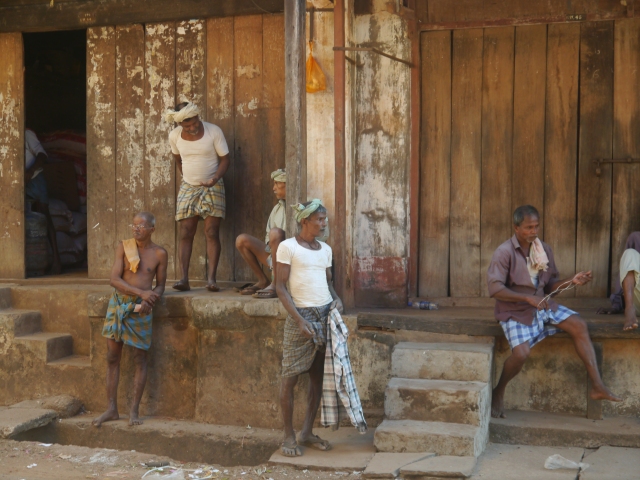
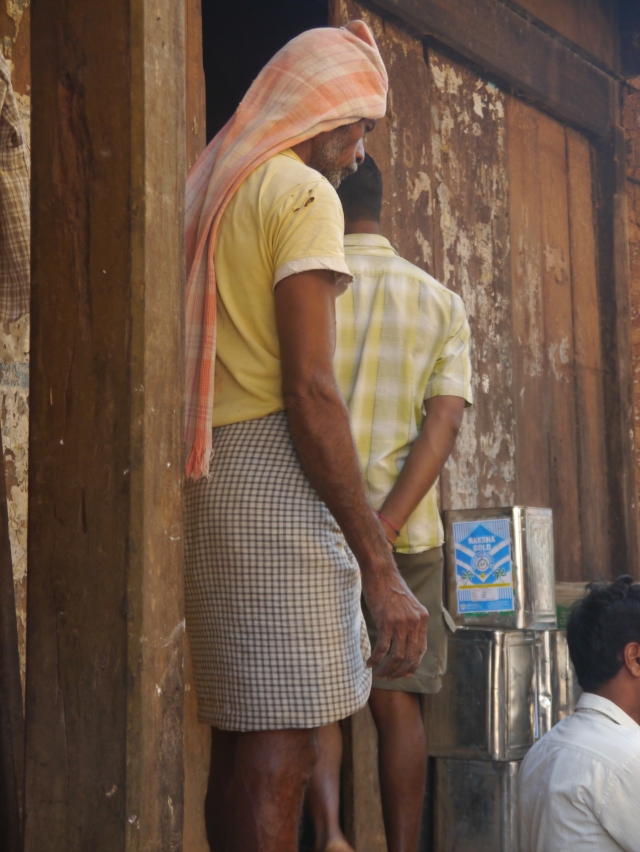
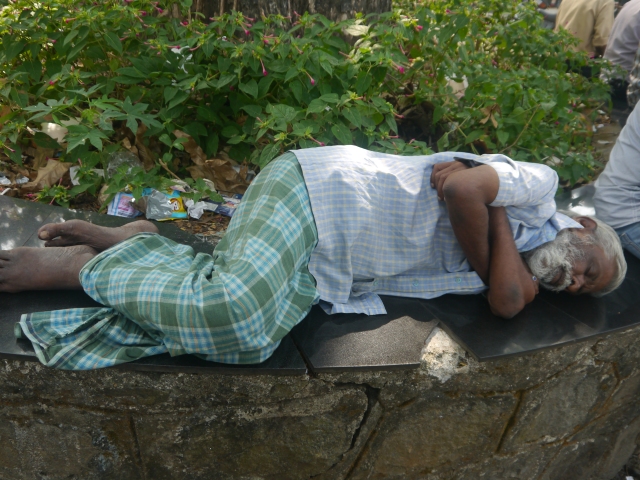
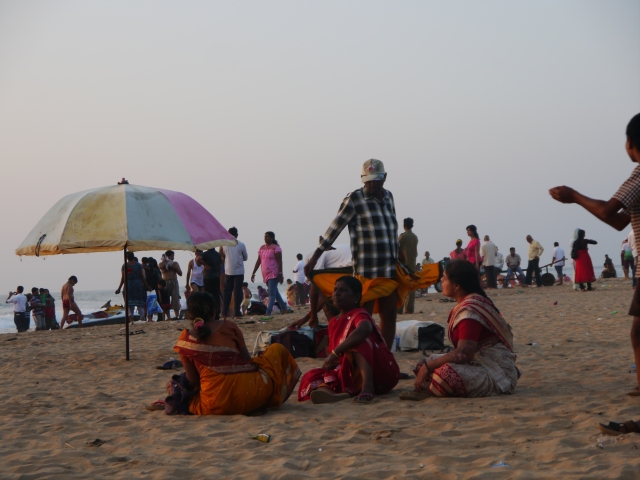
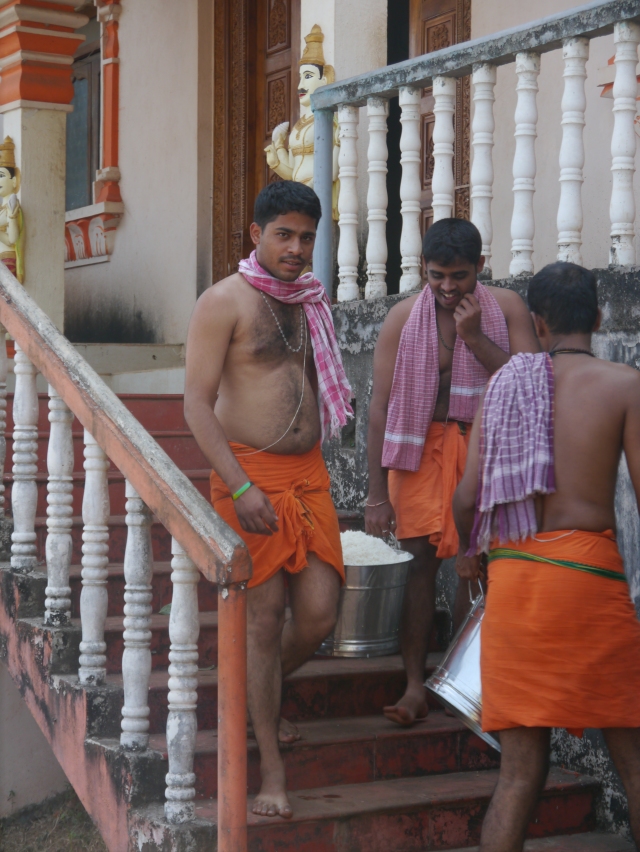
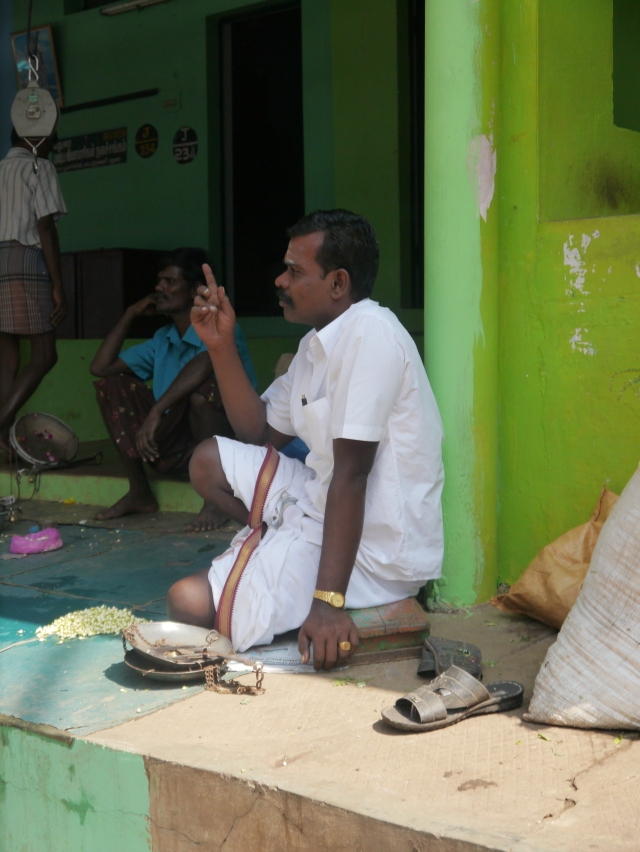

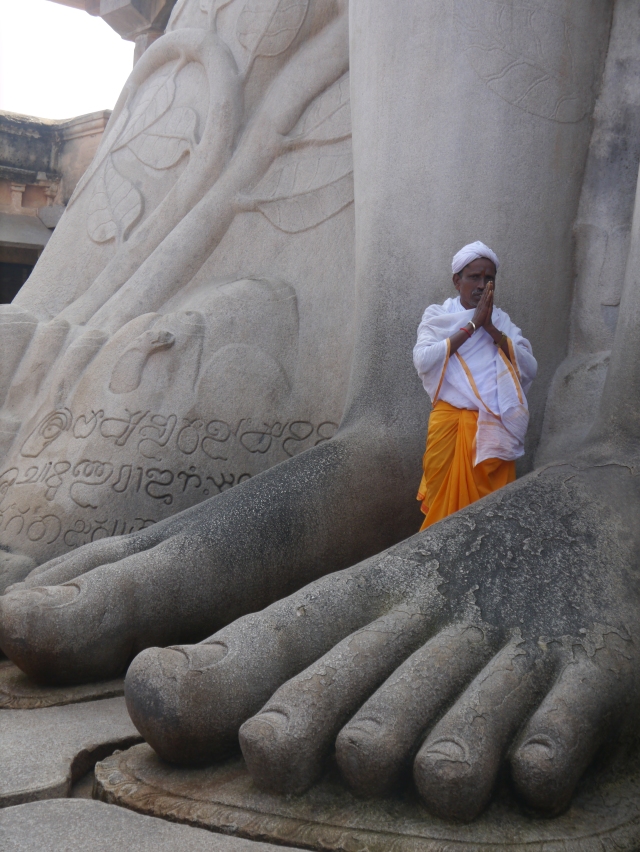
Before today I didn’t know what a lungi was, now I want one too. I so enjoy the things you write about, the way you write and the photos are just the cream on top. Thanks
I think that I am onto something: lungi lust! Once you experience one, there’s no going back. Thanks for being there, Sue…and for reading and taking a moment of your time to comment.
Fascinating. I love the last picture of the Jain priest.
Thanks, Marie. I like that photo too but knew that it wasn’t a great example of lungi-wearing…but it does demonstrate its huge popularity.
Such a lovely post. I used to steal my dad’s veshtis and angavastrams to restyle into kurtas and stoles. It’s pretty much wear it as you want to!
I love the styling of the undershirts, especially the bias cut ones with the deep middle pocket, the secret pocket. Thanks.
nice
Thanks!
Great post about lungies. Of course I have seen them many a time, but not really noticed them. For that I give you honour. You have your eyes open and notice everyday life in its various forms and shapes. Simply wonderful, Nina.
As you no doubt must realize as an artist, so much of art lies in the details. Whether one writes, paints, performs or photographs, without in depth awareness of the small things, true creativity comes to a dead end. I do try to take it all in. In India there is so very much to take in-all at once. And for that I am eternally grateful. Thanks for your encouragement. It does mean a lot.